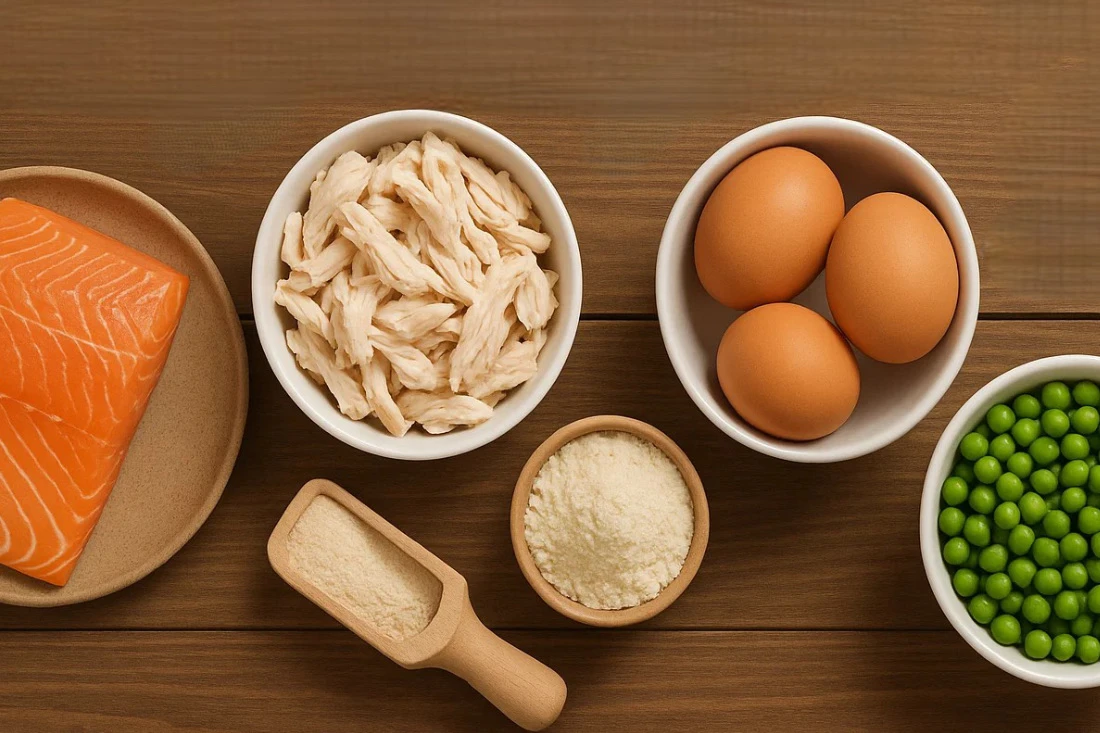Losing weight is a journey that requires more than just cutting calories; it demands the formation of sustainable habits that support long-term success. Understanding the principles of lasting habit formation can be the key to achieving and maintaining your desired weight. Building habits that stick involves setting realistic goals, staying motivated, and leaning on support systems to guide you through both triumphs and challenges.
To begin this transformative journey, one must recognize the significance of crafting actionable steps and cultivating a mindset geared toward gradual improvement. The path to successful weight loss is not solely defined by the number on the scale but by the series of consistent choices that promote wellness. Techniques such as mindful eating, stress management, and physical activity are integral to embedding these healthy habits into daily life.
From setting small goals to utilizing professional counseling and community support, we’ll provide you with the tools needed to embark on this life-changing journey. Whether you’re just starting or looking to reinforce your current efforts, these insights will help you create a sustainable approach to weight loss.
Set Small, Realistic Goals
Building lasting habits for successful weight loss begins with setting small, realistic goals. These goals keep you motivated and on track. Instead of aiming for rapid weight loss, focus on achievable steps that promote long-term success.
Here are some steps to help you set realistic goals:
- Start with manageable targets: Aim to lose 1-2 pounds a week. This pace helps in maintaining healthy weight.
- Incorporate healthy habits gradually: Introduce one change at a time, like adding more nutritious foods into your diet or increasing your physical activity.
- Monitor your progress: Use a food journal to track food intake and portion control.
- Stay consistent with exercise: Engage in regular exercise such as brisk walking or aerobic exercise.
Remember to consult with a health care provider before starting any weight loss program. They can offer guidance, especially if you have existing health conditions or health risks.
Here’s how small goals can contribute to successful weight loss:
Goal Type | Example |
|---|---|
Physical Activity | Walk 30 minutes daily |
Food Intake | Include one extra serving of vegetables |
Sleep Habits | Aim for 7-9 hours of sleep |
These incremental changes help control body weight, improve blood sugar levels, and lower blood pressure, supporting a healthier lifestyle.
Foster Motivation Through Achievements
Fostering motivation through achievements is essential for long-term success. Start by setting clear goals. Having concrete objectives can keep you focused and motivated. For instance, aim for a specific number of steps in your brisk walking routine or track your food intake with a food journal.
Keep track of your physical activity and celebrate small victories. Each pound lost or healthy meal counts. This will not only boost your motivation but also help you stay on track with your weight loss journey.
Here is a simple list to help you stay motivated:
- Set realistic and specific goals.
- Track your progress with a journal or app.
- Celebrate small achievements.
- Reassess and adjust your goals as needed.
A balance of aerobic exercise and a healthy diet can yield many health benefits, such as improved blood pressure and blood sugar levels. Consult a professional to tailor your weight loss program to suit your body’s needs.
Remember, success is not achieved overnight. Focus on building healthy habits that lead to lasting achievements. This approach will foster continuous motivation on your journey toward a healthy weight.
Build a Support System
To achieve successful weight loss, building a support system is crucial. It keeps you motivated and accountable throughout your weight loss journey. Here is how you can create one:
- Family and Friends: Share your weight loss goals with your close family and friends. They can offer encouragement and understanding as you adopt healthy habits.
- Join a Group: Look for local weight loss programs or online communities. These groups provide shared experiences and valuable tips for regular exercise and portion control.
- Professional Guidance: Consult with a health care provider or nutritionist. They can tailor a healthy diet and exercise program suited to your needs, considering any health risks or conditions.
- Fitness Buddies: Pair up with someone for brisk walking or aerobic exercise. A workout buddy makes exercising enjoyable and keeps you committed.
- Food Journal Partners: Exchange food intake records with a friend. Discussing food choices and healthy foods can motivate you both.
A supportive environment can make your weight loss efforts smoother and lasting. Surrounding yourself with positive influences helps you focus on your healthy weight and body weight goals.
Utilize Professional Counseling
Utilizing professional counseling can be a vital step in building lasting habits for successful weight loss. A counselor can provide support and guidance, helping you understand the psychological aspects of your weight loss journey.
Benefits of Professional Counseling:
- Goal Setting: Counselors assist in creating realistic weight loss goals.
- Emotional Support: They provide a safe space to discuss emotional challenges.
- Behavioral Strategies: Find strategies to replace unhealthy habits with healthy ones.
Counselors can also help you navigate issues like stress eating and low motivation. They work with you to improve your relationship with food and foster healthy eating habits.
How Counseling Helps:
Counseling Benefit | Description |
|---|---|
Tailored Advice | Receive personalized advice based on your unique needs and health conditions. |
Accountability | Regular sessions ensure accountability in your weight loss efforts. |
Long-term Focus | Encourages the development of long-term healthy habits, not just rapid weight loss. |
By incorporating counseling into a weight loss program, you increase the likelihood of maintaining a healthy weight. Consider speaking to a health care provider for a referral to professional counseling. The right support system can make a significant difference in achieving your weight loss goals.
Engage with Community Groups
Engaging with community groups is a powerful way to boost your weight loss success. Joining a group provides support and accountability, which are crucial for building lasting habits.
Participating in group activities, like brisk walking or aerobic exercises, helps keep physical activity fun and motivating. It also introduces you to new friends who share similar weight loss goals. This shared journey can make your weight loss efforts more enjoyable and effective.
Here are some benefits of community group involvement:
- Support System: Gain encouragement and motivation from others.
- Shared Knowledge: Learn tips on healthy foods and portion control.
- Increased Accountability: Stay on track with your weight loss journey.
- Diverse Activities: Try new exercises and activities.
Joining a group can also lower health risks by promoting regular exercise and healthy habits. These groups often connect you with experts who may offer advice on creating a healthy diet or an exercise program tailored to your needs.
A community group can transform your weight loss experience, making it more enjoyable and sustainable in the long term.
Leverage Online Resources for Support
The internet offers numerous tools to support your weight loss journey. Online communities can help you stay motivated and accountable. Joining a weight loss program app lets you track your food intake and physical activity easily. These apps can help you stick to healthy habits and reach your weight loss goals. They often suggest nutritious foods to include in your healthy diet.
Benefits of Online Tools:
- Food Journal: Track your meals and spot patterns affecting body weight.
- Exercise Program: Find tutorials for brisk walking or aerobic exercise.
- Forums and Support Groups: Share experiences and get advice on excess weight.
When using online resources, remember to consult your health care provider. They can ensure any online tips suit your health conditions, like high blood pressure or sleep apnea.
Support Tools Table
Tool Type | Benefits |
|---|---|
Apps | Track diet and exercise |
Forums | Share tips and stories |
Video Tutorials | Learn new exercises |
Using these resources can lead to long-term weight loss by supporting consistent, healthy habits.
Prioritize Balanced Nutrition
Prioritizing balanced nutrition is key to achieving lasting weight loss. A healthy diet rich in nutritious foods supplies the body with essential nutrients without excess calories. It aids in maintaining a healthy weight and managing weight loss goals effectively.
Key Elements of Balanced Nutrition:
| Component | Examples |
|---|---|
Proteins | Chicken, beans, eggs |
Carbohydrates | Whole grains, fruits, veggies |
Fats | Avocados, nuts, olive oil |
Vitamins | Leafy greens, citrus fruits |
Minerals | Dairy, fish, seeds |
To boost your weight loss efforts, consider these tips:
- Keep a Food Journal: Tracking food intake helps identify eating patterns and improve Portion control.
- Choose Healthy Foods: Opt for whole, unprocessed options. Prioritize fruits, vegetables, and lean proteins.
- Monitor Portion Sizes: This prevents overeating and helps regulate body weight.
Balanced nutrition, combined with regular exercise like aerobic exercise or brisk walking, can help manage blood sugar levels and reduce health risks such as high blood pressure and sleep apnea. Prioritize long-term weight loss by building healthy habits and consulting a health care provider if needed.
Integrate Regular Physical Activity
Integrating regular physical activity into your daily routine is essential for successful weight loss and overall health. Begin by setting clear weight loss goals and create a plan that fits your lifestyle.
Simple Steps to Start:
- Brisk Walking: Aim for at least 30 minutes a day.
- Aerobic Exercise: Try activities like cycling or swimming three times a week.
- Strength Training: Include exercises for all major muscle groups twice weekly.
These activities not only help shed excess weight but also improve blood pressure and blood sugar levels, reducing health risks. Regular exercise contributes to a healthy weight and increases your long-term weight loss success.
Consider tracking your progress with a physical activity journal. This can provide motivation and highlight improvements. If you’re new to exercising or have health conditions, consult a health care provider to tailor an exercise program to your needs.
Remember, the key is creating healthy habits and making them a lasting part of your weight loss journey. Prioritizing physical activities ensures your efforts are sustainable and beneficial.
Keep a Journal
Keeping a journal is essential for a successful weight loss journey. It helps track your food intake and body weight. A food journal lets you see what you eat daily. It brings awareness to your eating habits and helps identify areas to improve.
Benefits of Keeping a Journal:
- Tracks food intake and body weight
- Helps identify unhealthy eating patterns
- Supports long-term weight loss goals
Here’s how to start:
- Record Meals: Write down everything you eat. Include portion sizes.
- Track Exercise: Note your physical activity and duration.
- Monitor Weight: Weigh yourself weekly and jot it down.
- Reflect on Emotions: Note how you feel when eating.
Day | Meals | Exercise | Weight | Emotions |
|---|---|---|---|---|
Mon | ✓ | ✓ | ✓ | ✓ |
By keeping a journal, you can make informed choices about healthy foods. You’ll also be aware of patterns that impact your weight loss efforts. This practice supports your weight loss program by turning new habits into healthy habits.
Practice Mindful Eating
Mindful eating is a powerful tool for building lasting habits that support successful weight loss. It involves paying attention to your food intake and savoring each bite. This approach helps you enjoy healthy foods and recognize when you’re full, preventing overeating.
Steps to Practice Mindful Eating:
- Slow Down: Take time to chew your food thoroughly. This helps your body register fullness.
- Remove Distractions: Eat without the TV or phone to focus on your meal.
- Savor Each Bite: Appreciate the flavors and textures of your food. This can help with portion control.
- Listen to Your Body: Pay attention to hunger and satisfaction signals to better manage your body weight.
- Keep a Food Journal: Note what you eat and how you feel. This supports awareness of your eating habits.
Mindful Eating Tips | Benefits |
|---|---|
Chew slowly | Improved digestion |
Appreciate flavors | Greater meal satisfaction |
Focus on food, not devices | Less overeating |
Track eating patterns | Identify unhealthy habits |
Mindful eating can aid in achieving weight loss goals by promoting a healthy diet and reducing excess weight. It’s a sustainable practice that contributes to long-term weight loss success.
Implement Stress Management Techniques
Implementing stress management techniques can greatly improve your quality of life. Here’s how you can start:
Techniques for Stress Management
- Practice Mindfulness
- Focus on the present moment.
- Engage in deep breathing exercises.
- Regular Exercise
- Choose activities like brisk walking or aerobic exercise.
- Aim for at least 30 minutes a day.
- Healthy Diet
- Include nutritious foods in your meals.
- Practice portion control to manage food intake.
- Adequate Sleep
- Ensure you get 7-9 hours of sleep each night.
- Address any sleep disorders like sleep apnea.
- Journaling
- Maintain a food journal to track emotions and eating habits.
Quick Benefits
Technique | Immediate Benefits |
|---|---|
Mindfulness | Reduced anxiety |
Regular Exercise | Improved mood |
Healthy Diet | Balanced blood sugar levels |
Adequate Sleep | Lowered blood pressure |
Journaling | Clarity in stressors |
Incorporating these methods can lower health risks, support weight loss goals, and help maintain a healthy weight. Always consult with a health care provider if you have health conditions or concerns.
Ensure Sufficient Sleep
Ensuring enough sleep is crucial for lasting weight loss. Lack of sleep affects your body weight by increasing hunger and decreasing your metabolism. Aim for 7-9 hours of sleep each night. This supports healthy weight, improves mood, and boosts energy for physical activity.
Benefits of Sufficient Sleep:
- Improves Metabolism: Better sleep helps control blood sugar levels, reducing health risks.
- Reduces Cravings: Adequate sleep curbs cravings for unhealthy foods.
- Boosts Mood and Energy: More sleep helps with consistent exercise efforts.
Quick Tips for Better Sleep:
- Stick to a Schedule: Go to bed and wake up at the same time daily.
- Create a Restful Environment: Keep your bedroom cool, dark, and quiet.
- Limit Screen Time: Turn off electronics at least an hour before bed.
Impact on Health:
Getting enough sleep can lower risks like high blood pressure and sleep apnea. It complements your weight loss program by maintaining body weight and supporting healthy habits. Prioritize sleep as part of your weight loss journey to meet your weight loss goals effectively. Always consult your health care provider with any concerns about sleep or health conditions.
Gradually Incorporate Healthy Habits
Building lasting habits for weight loss begins with gradual change. Start with small steps, as these can lead to lasting success. Setting achievable weight loss goals is key.
- Incorporate Physical Activity: Begin with brisk walking or easy aerobic exercises. Aim for at least 150 minutes of moderate exercise per week.
- Choose Nutritious Foods: Focus on a healthy diet. Fill your plate with nutritious foods like fruits, vegetables, and lean proteins. This supports long-term weight loss and reduces health risks.
- Practice Portion Control: Smaller portions help manage food intake. Be mindful of what and how much you eat.
- Keep a Food Journal: Tracking your meals helps identify eating patterns. This can improve awareness and encourage healthier choices.
- Prioritize Sleep: Aim for 7-9 hours of sleep to aid your body weight management. Proper sleep helps control blood sugar levels and reduces sleep apnea risks.
By implementing these healthy habits slowly, you create a sustainable routine. Engage with health care providers to tailor your weight loss program. This personalized approach boosts successful weight loss efforts while minimizing health conditions and blood pressure issues.
Develop a Daily Routine for Consistency
Developing a daily routine is key to building consistency in your weight loss journey. Start by setting achievable weight loss goals. Break these down into smaller, daily tasks. Keep a food journal to track your food intake and identify areas for improvement. Mixing nutritious foods into your meals can help maintain energy and support your health.
Incorporate physical activity, such as brisk walking or aerobic exercise, into your routine. Regular exercise promotes long-term weight loss and enhances health benefits, such as improved blood pressure and blood sugar levels.
A sample daily routine might look like this:
Time | Activity |
|---|---|
7:00 AM | Healthy breakfast |
8:00 AM | Brisk walking (30 minutes) |
12:00 PM | Nutritious lunch |
5:00 PM | Aerobic exercise (30 minutes) |
7:00 PM | Healthy dinner |
9:00 PM | Reflect on day with food journal |
Ensure you get hours of sleep, as poor sleep can affect body weight and contribute to health risks like sleep apnea. Discuss your habits and health conditions with a health care provider to tailor a weight loss program suited to your needs.
Monitor and Adjust Your Progress
Monitoring and adjusting your progress is key to successful weight loss. Start by keeping a food journal. Track what you eat, your physical activity, and how you feel. This helps you understand your habits and see where you can improve.
Regularly assess your weight loss efforts. Weigh yourself weekly to track changes in body weight. Remember, rapid weight loss isn’t sustainable. Aim for steady progress toward a healthy weight.
Evaluate your weight loss goals. Are you meeting them? If not, consider new strategies. Consult a health care provider for advice. Adjust your exercise program as needed. Incorporate diverse activities like aerobic exercise or brisk walking for maximum health benefits.
List your progress:
- Weekly Weigh-ins
- Food Intake Tracking
- Physical Activity Logging
- Adjusting Goals as Needed
Here is a simple table to track your weekly progress:
Week | Weight Loss (lbs) | Exercise Hours | Food Journal Notes |
|---|---|---|---|
1 | -2 | 5 | Focus more on portion control. |
2 | -1 | 6 | Include more nutritious foods. |
Remember to adapt as you go. This will ensure a sustainable weight loss journey and long-term health improvement.
Celebrate Milestones and Successes
Celebrate milestones and successes to boost your weight loss journey. Recognizing small victories enhances motivation and builds lasting habits. Here are some ways to celebrate:
Ways to Celebrate:
- Reflect on Achievements: Keep a food journal to track progress. Seeing how far you’ve come is motivating.
- Reward Yourself: Choose non-food rewards like a new workout outfit or a movie night.
- Share with Others: Share your achievements with friends or in a weight loss program group. Support from others can be encouraging.
- Set New Goals: Once you achieve a milestone, set new weight loss goals. Keep challenging yourself.
- Take Time for Self-Care: Enjoy activities that reduce stress, like brisk walking or meditation. These promote health benefits and improve physical activity levels.
Progress Tracking Table:
Milestone | Reward | Next Goal |
|---|---|---|
Lost 5 pounds | New Book | Lose 5 more pounds |
Exercise 3x a week | Spa Day | Exercise 4x a week |
Celebrating your successes is crucial for long-term weight loss. It reinforces your healthy habits and propels your weight loss efforts forward.
Identify and Overcome Barriers to Change
To achieve lasting habits for successful weight loss, it’s crucial to identify and overcome barriers to change. Many face obstacles like lack of time, motivation, or understanding. Recognize these barriers to tackle them effectively.
Common Barriers and Solutions
Barrier | Solution |
|---|---|
Lack of Time | Schedule short, brisk walking sessions daily. |
Low Motivation | Set clear weight loss goals. Track progress. |
Unhealthy Food Intake | Keep a food journal. Focus on nutritious foods. |
Lack of Knowledge | Consult a health care provider or nutritionist. |
Steps to Overcome Barriers
- Set Clear Goals: Define your weight loss journey with specific, measurable objectives.
- Portion Control: Be mindful of food intake and practice portion control.
- Regular Exercise: Incorporate aerobic exercise into your routine for health benefits.
- Seek Support: Share your progress with friends or join a weight loss program.
By identifying your unique hurdles and addressing them with practical solutions, you can build healthy habits that lead to long-term weight loss success.
Call SlimCare Solutions
Are you ready to start your weight loss journey? Call Slim Care Solutions at 916-579-SLIM for professional weight loss management. Our team is dedicated to helping you achieve your weight loss goals.
Why Choose SlimCare Solutions?
- Personalized Programs: Tailor-made weight loss programs that fit your lifestyle.
- Expert Guidance: Professional advice from experienced health care providers.
- Comprehensive Approach: Focus on healthy habits, physical activity, and nutritious foods for long-term success.
Disclaimer: The information provided in this blog post is for educational purposes only and is not intended as medical advice. Always consult with a healthcare professional before making any changes to your diet or exercise routine.
























